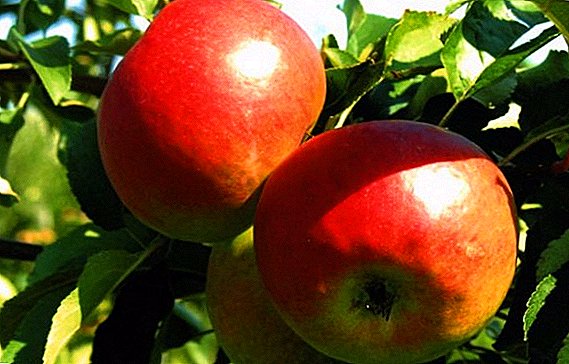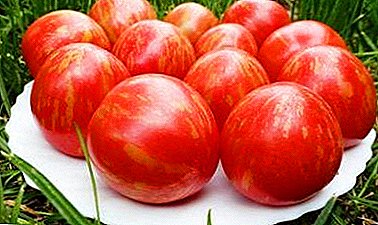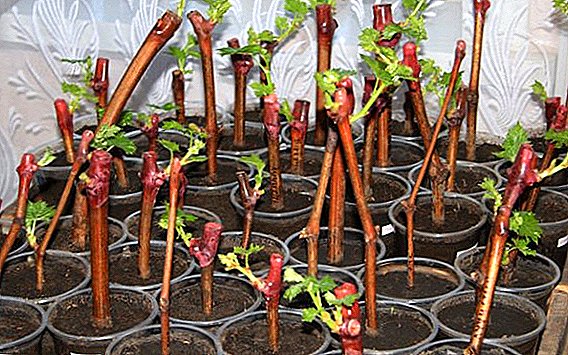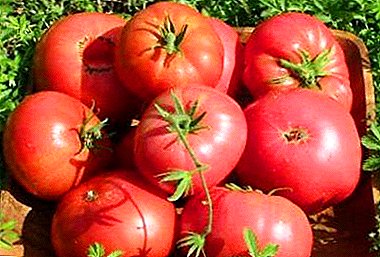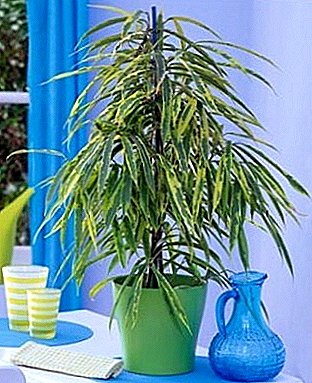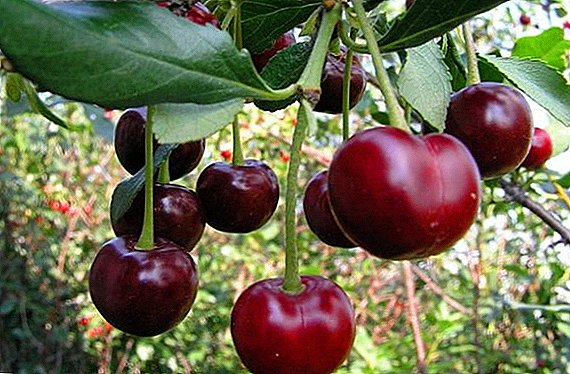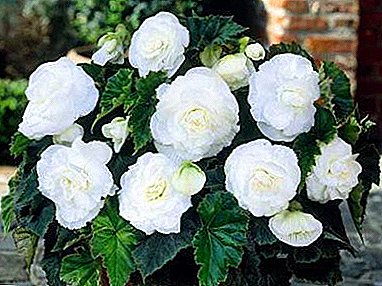
Terry begonia belongs to the Begonev family, in which there are approximately 800 species. Among the indoor plants, it is particularly popular.
Among indoor plants, terry begonia enjoys special attention and popularity. Some flower growers say that it is endowed with some kind of magical attraction. Not surprising. It is enough to see her charming flowers once to fall in love once and for all!
The flower stands out for its unpretentiousness and diversity, as can be easily seen by looking at the photos of the begonias in our article.
Botanical description and history of the flower
Terry begonia is a compact ornamental shrub with beautiful carved leaves, which are green or reddish color.
Flowers can be of different colors:
- orange;
- yellow;
- pink;
- red;
- white.
In form, they look like small roses. Due to the presence of a shaggy border on the petals of flowers, which gives it tenderness, they are called terry. At home, the plant began to grow from the 17th century. Begonia flower was named after Michel Begone, who was the French governor of the island of Haiti. A monk Charles Plumier discovered this type of plant while traveling to the Antilles. There he met the first copies of this flower, which struck a variety of colors and shapes.
Photos of plants
Here you can see photos of plants and flowers:




Varieties
Terry begonias depending on the underground part are bushy and tuberous. They differ in the aboveground part. Some grow in a vertical bush, while others have long shoots, they are called ampelous. In tuberous begonias flowers are large in size, which varies from 1.5 to 15-20 cm. Their colors and the edges of the petals may vary. Sometimes they smell.
Ampel begonias:
- able to hang;
- can braid a lattice or a support;
- bloom profusely.
There are types of ampelous begonias, in which flowers are large 10-15 cm, also found with small - up to 5 cm. The peak of flowering occurs in spring. Some varieties delight bloom all summer. Mostly flowers ampelous begonias pink and white color.
Landing
For cultivation with the help of begonia tubers, terry planting material must be prepared before the cold comes. Pulling the tubers out of the ground, they are cleaned and the stems are removed. They are stored in sand or peat in a place where the temperature is plus 8-11 ° C.
Landings are engaged from mid-February to May. The method of growing begonias with the help of seeds is troublesome, therefore it is not widespread. Planting begonias terry in the area, open loggia or in the winter garden should be dealt with at the beginning or mid-May, the earth should be well warmed.
A shallow clay pot with drainage holes at the bottom is suitable for growing this plant. Since clay is a porous material, the fresh air they need will flow to the roots. For ampel varieties are considered to be suitable wide and small pots.
Lighting and location
The begonia will grow beautifully, bloom profusely and vividly in the presence of intense, diffused and soft lighting. When it hits the direct rays of the sun, the flowers will become faded, and burns will appear on the leaves. Exhausting rays can lead to overheating and death of the plant. The best place in the room for him are windows that look to the east and west. Most begonias in the winter need additional lighting.
Important! In order for all sides of this flower to get the same amount of light, and also so that the leaves do not become crooked, the pot must be turned. Begonia terry loves fresh air. In the summer, it can be taken out into the street, but rain should not be allowed to fall on it, and the plant must also be kept away from wind and drafts.
Soil requirements
 Landing is best to take the land:
Landing is best to take the land:
- easy;
- loose;
- rich in minerals.
You can buy ready-made soil in a special store, and for drainage, add sand to it, or prepare the soil yourself.
To do this, you need to mix:
- greenhouse land for indoor plants;
- peat;
- sifted sand.
- flowers;
- leaves;
- tubers.
- follow the appearance;
- give the desired shape;
- remove dry stems.
- high humidity;
- frequent temperature changes;
- drafts.
- spider mite;
- aphid;
- leaf and gall nematode.
At the bottom there must be a dense drainage layer. It will not let the water stagnate in the pot.
Open field and home care
In order to achieve abundant flowering of terry begonia you need to properly care. The temperature in the room should be moderate - + 19-23 ° С, in winter - + 18-20 ° С. She is not a fan of hot rooms where dry air prevails, on the contrary, she needs high humidity. However, you can not spray the plant, because it may appear brown spots. The best way out is to spray air.
Begonia should be watered depending on the time of year. In the summer, about 2 times a week, and if it is very hot then every day, it depends on the drying of the earth's surface. However, we must be careful not to allow stagnation of water, which acts on the flower is detrimental. Starting in the autumn, watering should be moderate, and in winter, the tuberous species stop watering altogether.
Watering other species, in which the leaves remain for the winter, is reduced to a minimum. In the tuberous comes a period of rest. Their ground part dies off, and the tuber itself must be moved to a cool place. It is recommended to take water separated from water for several days.
When watering it is impossible that she fell on:
It is advised to pour water on the edge of the pot or through the pan. Terry begonia must be fed. During its reproduction, you need to use special additives that are introduced into the ground. For fertilizing use mineral fertilizers. The procedure is carried out 1 time per week.
 In fresh soil, terry begonia is transplanted in early spring, tuberous varieties are transplanted every year, and ampelous varieties are 2 years old once. Over time, the flower loses its decorativeness, grafting will help to update it. If begonias terry ground part is a bush, then it is required to regularly prune. With the help of such a procedure, it is possible to form its appearance, as a result there is a rejuvenation of the plant.
In fresh soil, terry begonia is transplanted in early spring, tuberous varieties are transplanted every year, and ampelous varieties are 2 years old once. Over time, the flower loses its decorativeness, grafting will help to update it. If begonias terry ground part is a bush, then it is required to regularly prune. With the help of such a procedure, it is possible to form its appearance, as a result there is a rejuvenation of the plant.
For cutting use a sharp knife. When a young stem grows up to 10 cm, you need to pin the top, then side shoots will form. After they reach 12 centimeters in length, they must also be pinned.
In the future, to be:
Amputean varieties of begonias are pruned when they need to give a beautiful appearance.
Common diseases and pests
Gray mold is a common disease.in which the leaves appear mold. The main reason is the presence of a flower in a cold, damp and poorly ventilated room. Such leaves are necessarily removed, and begonia is treated with special means.
Another common disease is powdery mildew. It is manifested by the appearance on the leaves of a white color.
The disease develops due to:
Powdery mildew often ill flowers in the open air. For the fight used fungicides.
Sometimes pests are attacked by terry begonia, such as:
Breeding features
 Tuber species multiply by dividing the tuber, flowering begonias - seeds, those that have a stem - stem cuttings, as well as parts of the leaf and leaf cuttings.
Tuber species multiply by dividing the tuber, flowering begonias - seeds, those that have a stem - stem cuttings, as well as parts of the leaf and leaf cuttings.
The most unreliable, complex and long is considered a method of propagation by seed. It is used if there is no material for vegetative propagation, or, if necessary, to obtain a huge number of plants.
When parts of a leaf or leaf cuttings are used, from which children are then formed, they, like sowing seeds, develop for a long time. Features of the maternal specimen are preserved during vegetative reproduction.
Stem grafting of terry begonia has many advantages due to which this method is the most optimal. This option is the easiest, reliable and fast. It can be used for almost all varieties of begonia, while retaining all the characteristics of the variety. Rooted cuttings in height can reach 15 cm. This is already a fairly strong young plant that grows very quickly. It can bloom almost immediately, although it depends on the species.
The process of growing terry begonia is considered useful and fun. This flower removes microbes from the room, has a healing effect on the heart and blood vessels. In addition to the delightful appearance of the begonia has a positive energy.





